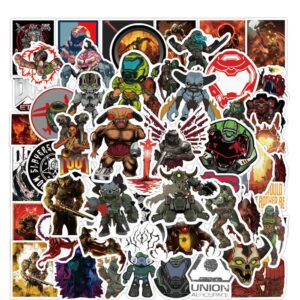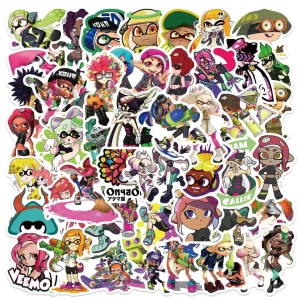The Sega 32X was a video game console that was released in 1994 and was designed to be an add-on device for the popular Sega Genesis console. It was intended to provide players with a more advanced, 32-bit gaming experience, but ultimately failed to capture the attention of the gaming world. Despite this, the Sega 32X remains an important piece of gaming history and serves as an interesting case study of sorts for the gaming industry. In this article, we take a closer look at this often-overlooked console, diving into the hardware, history, sales performance, games, and more. Join us as we explore the Sega 32X and all that it has to offer.
Sega 32X Overview
The Sega 32X console was initially released in 1994 and was an add-on to the already existing Sega Genesis console. It was designed to compete with other consoles that were released during that time such as the Super Nintendo Entertainment System and the Atari Jaguar.
One of the standout features of the 32X was its hardware design. The console had a sleek and modern aesthetic that made it stand out from other consoles at the time. It was also designed as an add-on to the Sega Genesis console, which made it an affordable alternative to other consoles in the market.
Compared to other consoles in the market at that time, such as the Super Nintendo Entertainment System, the Sega 32X had better hardware features. It had a 32-bit processor, which allowed it to process games much faster. It also had enhanced graphics and sound capabilities, which made the gaming experience more enjoyable.
History of the Sega 32X
The Sega 32X was first released in North America and Europe in late 1994. It represented Sega’s attempt to expand their dominance in the video game market during the 16-bit era. The company had already achieved great success with their Sega Genesis console, but their hardware was starting to show its age.
The 32X was first announced at the Tokyo Toy Show in June 1994, and it would later become the most short-lived console in the history of video gaming. Sega’s plan was to offer gamers a way to play 32-bit games on their existing Genesis console, with the 32X serving as a sort of add-on device (similar to how the Sega CD functioned).
Critics were initially skeptical of the console and wondered why Sega did not focus entirely on its successor, the Sega Saturn, rather than a device that may cannibalize sales of the existing Genesis console. Sega’s response was that the 32X represented a cost-effective way for gamers to enjoy 32-bit games without shelling out the high costs of buying a whole new console.
Although the 32X launched with some fanfare, it ultimately failed to gain much traction in the marketplace. The Sega Saturn released in Japan on November 22, 1994, and the 32X would only sell a few hundred thousand units before it was discontinued in 1996. Critics pointed to the confusing marketing strategy and the fact that this was clearly an awkward transitional device, rather than a true next-generation console, as reasons for its lackluster sales performance.
Sales and Market Performance of the Sega 32X
When it comes to sales and market performance, the Sega 32X was a mixed bag. On one hand, the console did have some initial success, with over 600,000 units sold worldwide in its first few months. However, those numbers quickly began to decline, and the 32X ultimately failed to meet sales expectations.
So what went wrong? There were several factors that contributed to the Sega 32X’s lackluster sales. One of the biggest issues was its high price point. At launch, the console retailed for $159.99 in the US, which was a steep price for an add-on to an existing console.
The console’s library of games was another issue. While there were some standout titles like Virtua Racing Deluxe and Star Wars Arcade, many of the 40+ games released for the 32X were lackluster ports of existing games or simply not very good.
Finally, the timing of the Sega 32X’s release was also a contributing factor. The console hit shelves in late 1994, just as the Sega Saturn and Sony PlayStation were launching. This meant that many consumers were already looking to upgrade to these next-generation consoles, rather than investing in an add-on for their existing Sega Genesis.
Games for the Sega 32X
Sega 32X may have been a console in limbo, but it still had some notable games in its library. Here are some of the games that stood out:
- Virtua Racing Deluxe – This was a port of the arcade game Virtua Racing, with enhanced graphics and smoother gameplay. It was among the first games released for the console and helped demonstrate the console’s graphical capabilities.
- Knuckles’ Chaotix – A spin-off of the Sonic the Hedgehog series, Knuckles’ Chaotix was praised for its unique gameplay mechanics and colorful visuals. It was one of the few games that made effective use of the “lock-on” feature that allowed players to play as different characters.
- Star Wars Arcade – As the name suggests, this arcade game was set in the Star Wars universe and featured fast-paced, dogfighting gameplay. Critics praised the game’s visuals and soundtrack, but criticized the short length and lack of depth.
- Mortal Kombat II – A port of the popular arcade fighting game, Mortal Kombat II for the Sega 32X was praised for its smooth and responsive controls. It also featured enhanced graphics and sound compared to previous console ports.
While the Sega 32X library was certainly not as extensive as some other consoles, these games remain notable entries in the console’s history. Despite this, the limited number of games was one of the key reasons why the console ultimately failed to attract a lasting audience.
Conclusion
In conclusion, the Sega 32X console may have been short-lived, but it still managed to make a significant impact on the gaming industry. The console’s unique hardware and features were quite impressive at the time, but ultimately, its limited game library and the release of new systems made it difficult for the 32X to find success in a crowded marketplace.
Despite its flaws, the Sega 32X still holds a special place in the hearts of many gamers who grew up during the console’s era. Its legacy may not be as significant compared to other consoles, but it still earned its place in gaming history as a curious and innovative device that tried to push the limits of technology.
Analyzing its impact on the gaming industry, we can say that the Sega 32X wasn’t a significant driver of change. However, its influence can still be felt today, as it inspired successors and hardware add-ons that pushed the boundaries of what was possible in gaming.
Ultimately, our retrospective and review of the Sega 32X console has shown us that it was a mixed bag of innovation and limitations. However, it remains an essential piece of gaming history that should not be forgotten by both retro and modern gaming enthusiasts.













